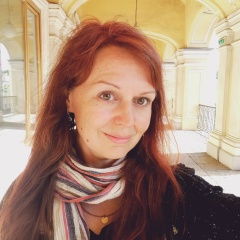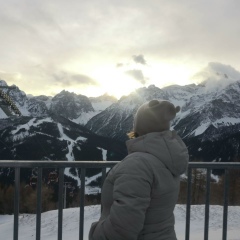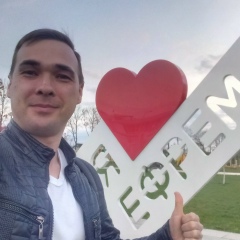Сегодня — 14 июня — день национального траура в Эстонии, день памяти жертв массовых депортаций местного населения в 1940-50-е годы.
Недавно мои друзья отправились в Эстонию на выходные и, выйдя на железнодорожной станции Тапа (поселок где-то посередине между Нарвой и Таллинном), обнаружили на здании вокзала рядом с черно-белой табличкой "Tapa" другую табличку — на кириллице — "Ужур". Тапа — Ужур. Фотографию со странным набором букв отправили мне.
Так я случайно выяснила, что табличка на вокзале — часть целого мемориального проекта, посвященного памяти жертв сталинских депортаций. Он, по-своему, очень крутой и необычный, хочу вас о нем рассказать. В качестве примера "а как вот еще можно, оказывается".
Называется он "Детство в Сибири" и, если не хочется читать, то можно перейти по ссылке https://www.siberilapsed.ee/#/ (доступна и русская версия). В общем, некая инициативная творческая группа художников SLЭD решила временно преобразовать пространство на железнодорожных станциях Эстонии, откуда происходили депортации. Ужур — это село в Красноярском крае, куда увозили взрослых и детей со станции Тапа. На каждой станции были повешены названия городов-побратимов по несчастью. Тарту — Омск, Йыхви — Абакан. Также в течение нескольких месяцев на станциях проходили тематические мини-выставки или другие культурные мероприятия. На сайте есть интерактивная карта — что, где и как.
Это еще не все. Многие "сибирские дети" после вернулись в Эстонию, и с тех пор ни разу не были там, где прошло их трудное, но все-таки детство. Участники проекта разыскали некоторых, уже немолодых, людей, чье детство прошло в Сибири, чтобы взять у них интервью, а также вместе с ними поехать в эти далекие деревни и посмотреть, что и насколько там изменилось. На эту исследовательскую часть ушло два года, результатом которой, частично, и стали выставки на ж/д станциях.
На самом деле, все эти мероприятия были посвящены 70-летию мартовской депортации (1949 года, самой массовой), соответственно, выставки открылись в марте, чтобы, символично, завершить работу сегодня. Так что я очень "вовремя" пишу этот пост. Однако. Мне лично самой понравилось "гулять" по сайту и читать. А еще мне понравилась относительно оригинальная идея и какая-то живая история, которая есть в этом проекте. Хочется, чтобы такого (по содержанию) было больше.
P.S. В комментариях ссылка на видео-тизер проекта (доступны русские субтитры). Деньги на него собирали краундфандингом.
https://www.hooandja.ee/sites/default/files/project_images/profiili_pilt.jpg
Недавно мои друзья отправились в Эстонию на выходные и, выйдя на железнодорожной станции Тапа (поселок где-то посередине между Нарвой и Таллинном), обнаружили на здании вокзала рядом с черно-белой табличкой "Tapa" другую табличку — на кириллице — "Ужур". Тапа — Ужур. Фотографию со странным набором букв отправили мне.
Так я случайно выяснила, что табличка на вокзале — часть целого мемориального проекта, посвященного памяти жертв сталинских депортаций. Он, по-своему, очень крутой и необычный, хочу вас о нем рассказать. В качестве примера "а как вот еще можно, оказывается".
Называется он "Детство в Сибири" и, если не хочется читать, то можно перейти по ссылке https://www.siberilapsed.ee/#/ (доступна и русская версия). В общем, некая инициативная творческая группа художников SLЭD решила временно преобразовать пространство на железнодорожных станциях Эстонии, откуда происходили депортации. Ужур — это село в Красноярском крае, куда увозили взрослых и детей со станции Тапа. На каждой станции были повешены названия городов-побратимов по несчастью. Тарту — Омск, Йыхви — Абакан. Также в течение нескольких месяцев на станциях проходили тематические мини-выставки или другие культурные мероприятия. На сайте есть интерактивная карта — что, где и как.
Это еще не все. Многие "сибирские дети" после вернулись в Эстонию, и с тех пор ни разу не были там, где прошло их трудное, но все-таки детство. Участники проекта разыскали некоторых, уже немолодых, людей, чье детство прошло в Сибири, чтобы взять у них интервью, а также вместе с ними поехать в эти далекие деревни и посмотреть, что и насколько там изменилось. На эту исследовательскую часть ушло два года, результатом которой, частично, и стали выставки на ж/д станциях.
На самом деле, все эти мероприятия были посвящены 70-летию мартовской депортации (1949 года, самой массовой), соответственно, выставки открылись в марте, чтобы, символично, завершить работу сегодня. Так что я очень "вовремя" пишу этот пост. Однако. Мне лично самой понравилось "гулять" по сайту и читать. А еще мне понравилась относительно оригинальная идея и какая-то живая история, которая есть в этом проекте. Хочется, чтобы такого (по содержанию) было больше.
P.S. В комментариях ссылка на видео-тизер проекта (доступны русские субтитры). Деньги на него собирали краундфандингом.
https://www.hooandja.ee/sites/default/files/project_images/profiili_pilt.jpg
Today, June 14, is the day of national mourning in Estonia, the day of commemoration of victims of mass deportations of the local population in the 1940s and 1950s.
Recently, my friends went to Estonia for a weekend and, going out at Tapa railway station (a village somewhere in the middle between Narva and Tallinn), found another sign in Cyrillic - Uzhur on the station building next to the black-and-white "Tapa" sign. Tapa - Uzhur. A photo with a strange set of letters sent to me.
So I accidentally found out that the sign at the station is part of a whole memorial project dedicated to the memory of the victims of Stalin’s deportations. He, in his own way, is very cool and unusual, I want to tell you about him. As an example, "but how else is it possible, it turns out."
It is called “Childhood in Siberia” and, if you don’t want to read, you can follow the link https://www.siberilapsed.ee/#/ (the Russian version is also available). In general, a certain initiative creative group of artists SLED decided to temporarily convert the space at the Estonian railway stations, from where the deportations took place. Uzhur is a village in the Krasnoyarsk Territory where adults and children were taken from Tapa station. At each station were hung the names of the twin cities of misfortune. Tartu - Omsk, Johvi - Abakan. Also within several months thematic mini-exhibitions or other cultural events took place at the stations. The site has an interactive map - what, where and how.
That's not all. Many "Siberian children" returned to Estonia after that, and since then they have never been where their difficult childhood passed, but still. The project participants tracked down some elderly people, whose childhood was spent in Siberia, to interview them, and also with them to go to these distant villages and see what and how much has changed there. This research part took two years, the result of which, partly, became exhibitions at railway stations.
In fact, all these events were devoted to the 70th anniversary of the March deportation (1949, the most massive), respectively, the exhibition opened in March to symbolically complete the work today. So I am very "on time" writing this post. But. I personally liked the "walk" on the site and read. I also liked the relatively original idea and some living history that is in this project. It would be desirable, that it (under the maintenance) was more.
P.S. In the comments link to the video teaser of the project (Russian subtitles are available). Money for him was collected by groundfund.
https://www.hooandja.ee/sites/default/files/project_images/profiili_pilt.jpg
Recently, my friends went to Estonia for a weekend and, going out at Tapa railway station (a village somewhere in the middle between Narva and Tallinn), found another sign in Cyrillic - Uzhur on the station building next to the black-and-white "Tapa" sign. Tapa - Uzhur. A photo with a strange set of letters sent to me.
So I accidentally found out that the sign at the station is part of a whole memorial project dedicated to the memory of the victims of Stalin’s deportations. He, in his own way, is very cool and unusual, I want to tell you about him. As an example, "but how else is it possible, it turns out."
It is called “Childhood in Siberia” and, if you don’t want to read, you can follow the link https://www.siberilapsed.ee/#/ (the Russian version is also available). In general, a certain initiative creative group of artists SLED decided to temporarily convert the space at the Estonian railway stations, from where the deportations took place. Uzhur is a village in the Krasnoyarsk Territory where adults and children were taken from Tapa station. At each station were hung the names of the twin cities of misfortune. Tartu - Omsk, Johvi - Abakan. Also within several months thematic mini-exhibitions or other cultural events took place at the stations. The site has an interactive map - what, where and how.
That's not all. Many "Siberian children" returned to Estonia after that, and since then they have never been where their difficult childhood passed, but still. The project participants tracked down some elderly people, whose childhood was spent in Siberia, to interview them, and also with them to go to these distant villages and see what and how much has changed there. This research part took two years, the result of which, partly, became exhibitions at railway stations.
In fact, all these events were devoted to the 70th anniversary of the March deportation (1949, the most massive), respectively, the exhibition opened in March to symbolically complete the work today. So I am very "on time" writing this post. But. I personally liked the "walk" on the site and read. I also liked the relatively original idea and some living history that is in this project. It would be desirable, that it (under the maintenance) was more.
P.S. In the comments link to the video teaser of the project (Russian subtitles are available). Money for him was collected by groundfund.
https://www.hooandja.ee/sites/default/files/project_images/profiili_pilt.jpg

У записи 56 лайков,
5 репостов,
2115 просмотров.
5 репостов,
2115 просмотров.
Эту запись оставил(а) на своей стене Полина Оскольская





































































